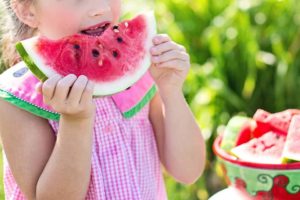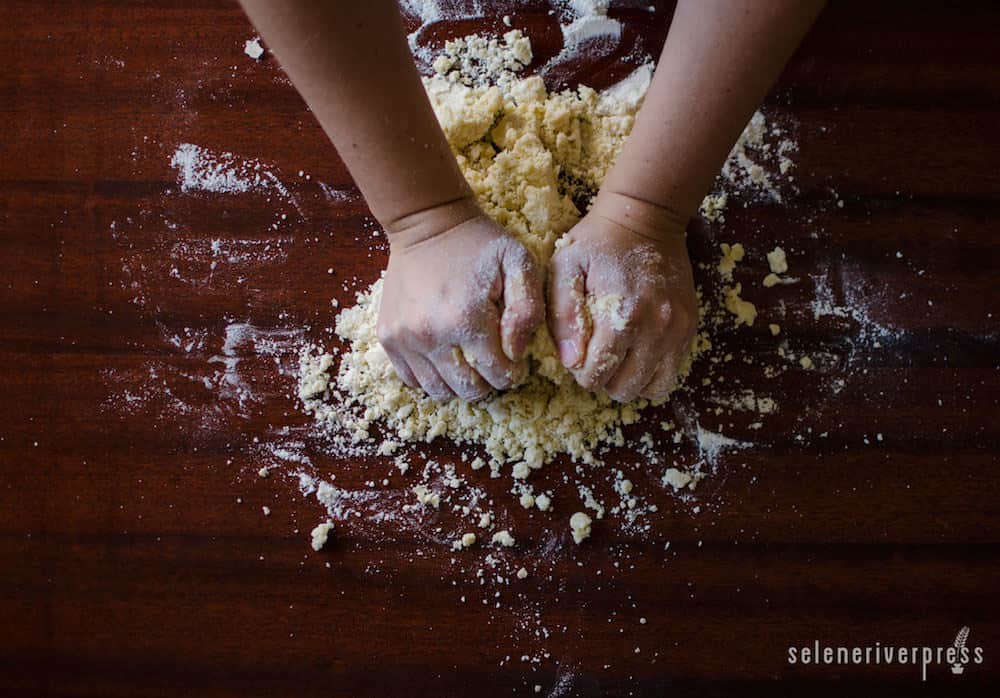Whether they’re tugging at your trousers, sweetly asking to “help,” or demanding to know what’s for dinner, kids in the kitchen can make us nervous. There are sharp knives, hot stoves and ovens, pots full of scalding liquid, and overflowing mixing bowls to worry about. But once you learn to navigate the risks, cooking together can be a fun and positive family activity that can help children better understand healthy eating, improve their dexterity, and foster an appreciation of food. Follow these tips to get your kids into the kitchen no matter what their age.
Ages 3–6
Learning to cook doesn’t have to mean risking burns or cuts. Start simple. Sit your kids on the floor with a big tub of water and some vegetables to wash for a fun, safe, and tactile way to begin teaching them about whole foods. They can tear leaves for salads and pour premeasured liquids with guidance.
As hand-eye coordination improves, it’s easier for small hands to hold and use specific tools. With child-safe knives, kids can cut strawberries, bananas, and other soft fruits (which you can turn around and offer as a simple, healthy snack). If you’re baking something or making a scramble, they’ll have a ball cracking and whisking eggs as they play assistant chef.
Teaching young kids to follow simple recipes also helps them practice reading and measuring. By incorporating these skills into everyday activities, the y learn “on the job.” Giving children the chance to follow instructions and contribute also builds self-esteem. You can start with this simple, healthy recipe for Pina Colada Chia Pudding. With only five ingredients and no cooking required, your child can prepare it and pop it into the fridge for dessert or a snack that will be ready only two hours later.
y learn “on the job.” Giving children the chance to follow instructions and contribute also builds self-esteem. You can start with this simple, healthy recipe for Pina Colada Chia Pudding. With only five ingredients and no cooking required, your child can prepare it and pop it into the fridge for dessert or a snack that will be ready only two hours later.
Ages 7–10
As children’s literacy and numeracy skills improve, so too does their ability to read recipes and actually help you in the kitchen! Kids at this age can begin measuring, pouring, mixing, and kneading, which helps take some of the little tasks off your plate. If you’d rather they weren’t in the kitchen while you’re dealing with hot plates and liquids, they can help beforehand with the preparation process. Put them in charge of sorting and gathering the ingredients, or ask them to wash, peel, and grate the vegetables and fruits.
Reward children with increased responsibility as they gain more experience in the kitchen. Encourage kids to be a part of the mealtime process by allowing them to find a healthy recipe to cook for dinner, and don’t forget to include them in the purchasing process. Create a shopping list, show them how to choose fruit and vegetables at the green grocer, and watch as they delight in ticking things off the list. You could even create theme nights (Mexican, Chinese, vegetarian, and so on), and use these occasions as an opportunity to expose your children to different types of cuisines and cultures across the world.
It’s been widely documented that kids who cook also begin building healthy food habits that last a lifetime. So next time they ask you what’s for dinner, let them come up with the answer.
Ages 11–13
By this age your kids should feel pretty comfortable in the kitchen and need less supervision when it comes to smaller, easier tasks. However, when it comes to learning how to cook, teaching older children how to use knives is the inevitable next step. Although it makes many parents nervous, learning knife skills such as cutting, chopping, and slicing doesn’t need to be dangerous. From protective gloves to knives designed specifically for kids, there’s a huge selection of products on the market that can ease budding cooks safely into the process.
Some parents make the mistake of thinking that blunt knives are safer for kids, but dull knives are actually more dangerous. Start your kids off with good-quality, sharpened knives, which are more likely to cut through the targeted object rather than slip and cause an accident! Also ensure they’re using the right knife for the job, and supervise until you and they feel confident. There’s nothing wrong with

slow and steady. Older kids can also begin learning how to safely operate stoves and ovens. Start with small tasks, such as boiling potatoes, and build up to more complicated endeavors as they gain confidence and skill.
This is also a great time to teach older kids how to read nutritional panels and become savvy healthy food shoppers. Simply showing them how to locate the ingredient list of a product is a great tip for life, and they’ll naturally start thinking about what foods are made of and why certain ingredients are used.
Finally, try buying local and in season. Not only is it often cheaper, but it also adds a touch of novelty to meals throughout the year, which may inspire kids to try new things and mix it up—something you’ll surely appreciate too!
Introducing kids to the kitchen doesn’t have to be daunting. With gradual progress and the right supervision, you’ll help them build knowledge of whole foods and create healthy habits for life. Spend less time cooking for the kids of your household and more time cooking with them!


